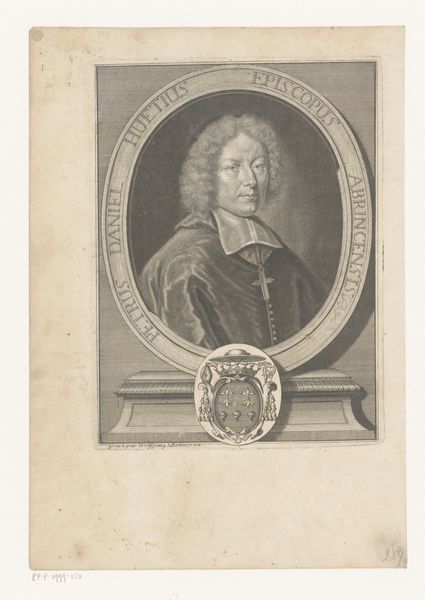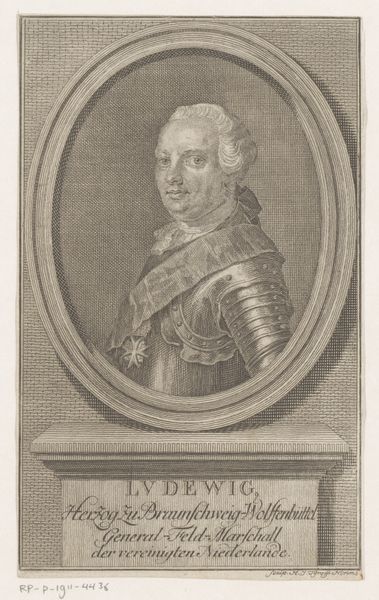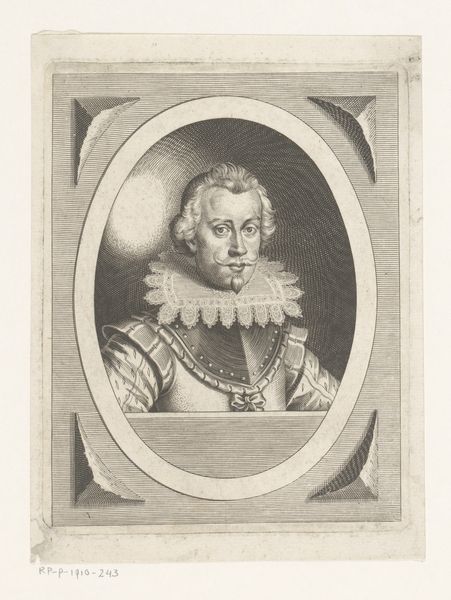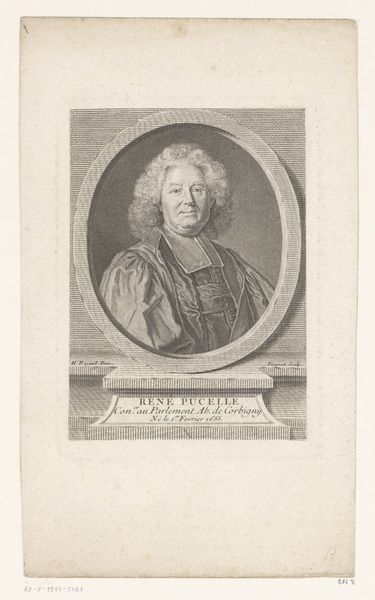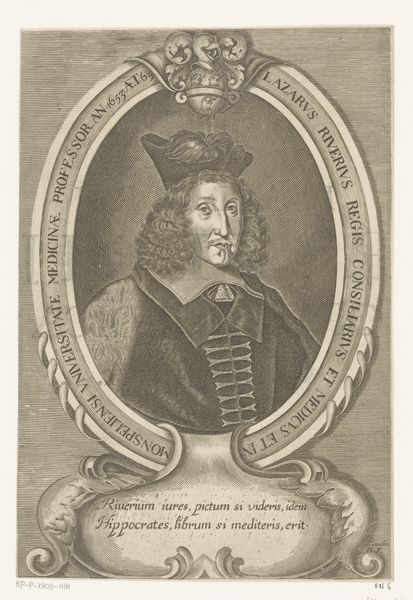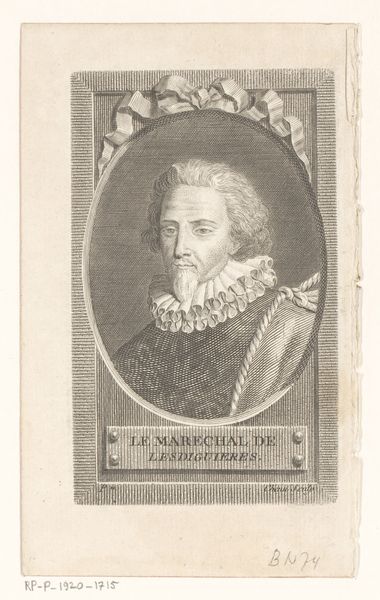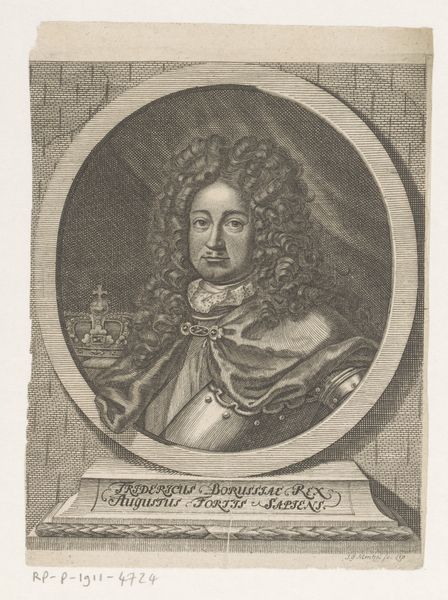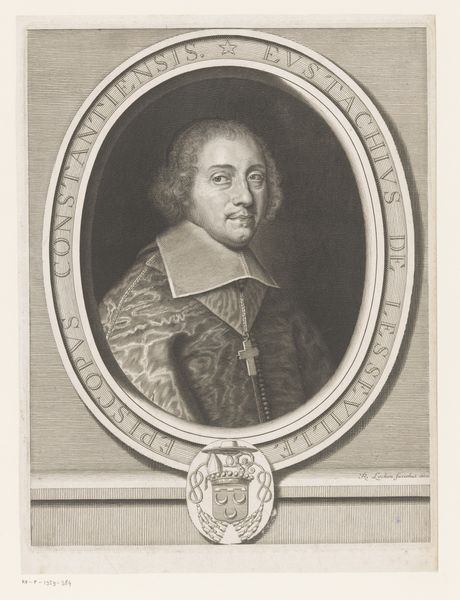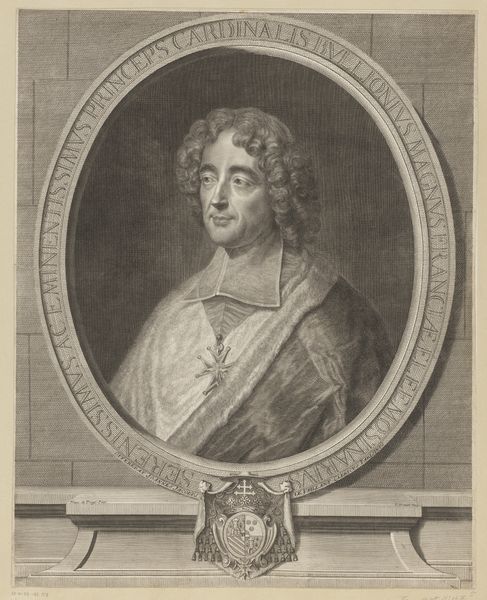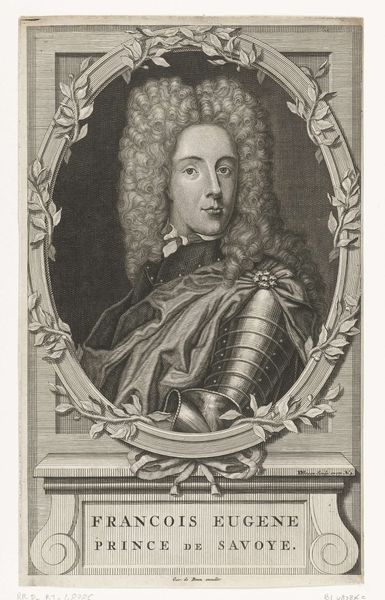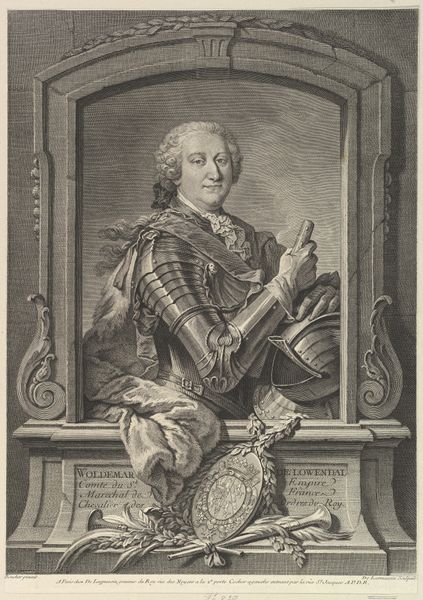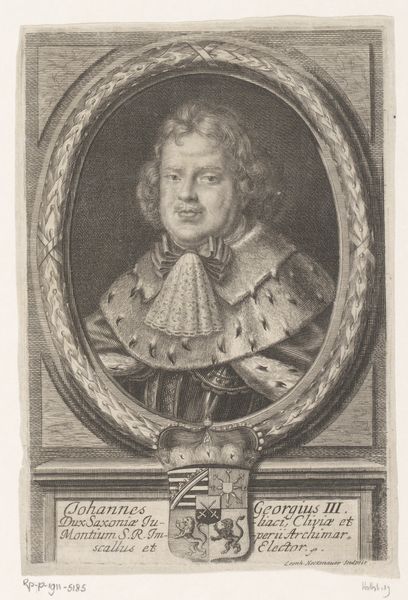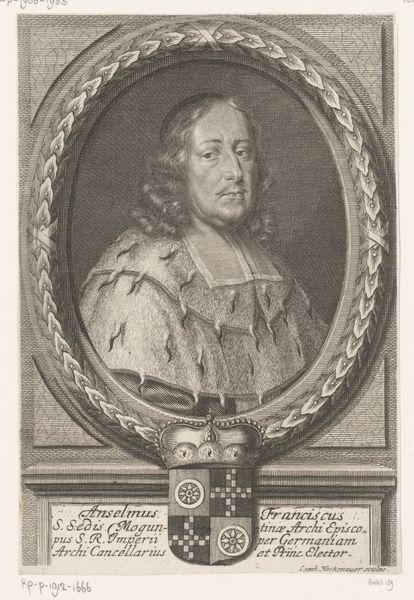
metal, engraving
#
portrait
#
baroque
#
metal
#
old engraving style
#
pencil drawing
#
history-painting
#
engraving
Dimensions: height 161 mm, width 98 mm
Copyright: Rijks Museum: Open Domain
Curator: This engraving by Johann Wilhelm Stör, made in 1739, depicts Ernst Frederik II, Duke of Saxe-Hildburghausen. The print resides here at the Rijksmuseum. It's a fascinating example of Baroque portraiture. Editor: The detail is striking! There's such a solemn air about him, almost theatrical. He seems aware he’s performing for posterity, which of course, he is. Curator: Precisely. Stör captures the Duke in full regalia—gleaming armor, flowing wig, ornate oval frame—each element reinforces the image of power and status. Armour itself often signifies preparedness, virtue, and leadership, invoking cultural memory associated with duty. Editor: It’s interesting to think about how armour transformed from practical battle gear to a symbolic costume, especially by the 18th century. Its presence is not functional; rather, it’s deliberately drawing from an imagined past heroism to bolster present authority. The engraver also seems to really relish those flourishes and curves in the ornament around the oval frame and his hair. Curator: Indeed. Ornament speaks volumes, literally, through visual language! The frame serves as a border, and almost like a stage, which allows the Duke to take center stage in an attempt to solidify a narrative of power through cultural associations. Notice also, if you will, the placement atop what looks like a classical pedestal—again emphasizing historical grandeur, perhaps even divine right. Editor: Absolutely. The print operates on multiple levels—art, history, and propaganda. These kinds of portraits functioned as important visual currency, weren't they? They helped shape public perception of rulers and legitimize their reign. Curator: In its role to convey status, that engraved armour speaks to what authority represents; strength, tradition and continuity of power. So the selection of imagery really underlines the importance of projecting that image into the public's minds at the time. Editor: It really highlights the curated nature of power, doesn't it? This seemingly simple engraving offers a window into the complex political landscape of the Baroque era and the vital role visual arts played within it. It's about presence, posterity and creating the symbolism that embodies and entrenches it. Curator: Yes, considering it’s a printed image that’s survived so long, we can trace our cultural memory of power represented here through a single portrait. What a compelling idea to take away!
Comments
No comments
Be the first to comment and join the conversation on the ultimate creative platform.
